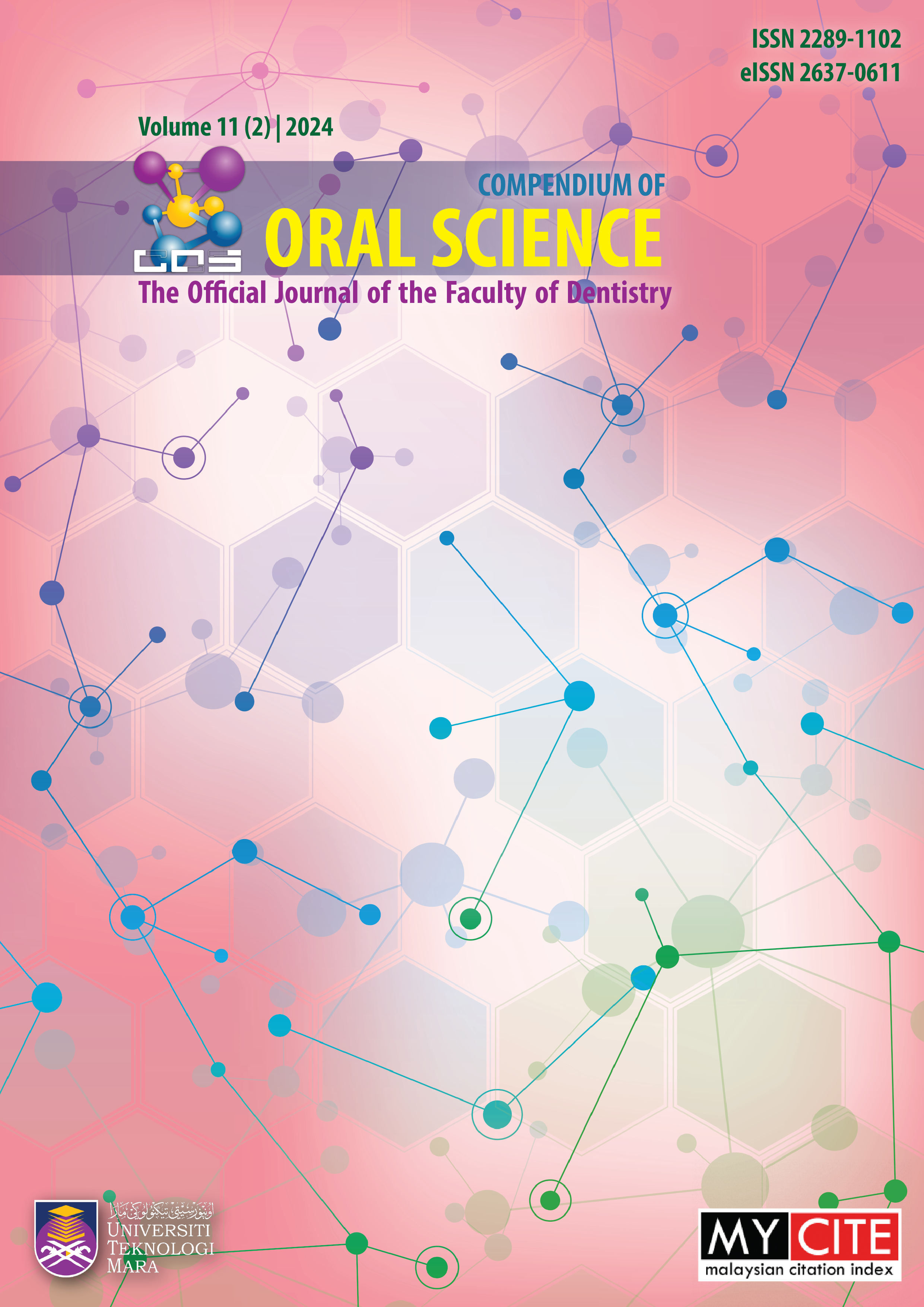Scoping Review: Evaluation of Sea Cucumber as a New Therapeutic Agent for Wound Healing Treatment in Clinical Trials and in vivo Studies
DOI:
https://doi.org/10.24191/cos.v11i2.27507Keywords:
sea cucumber, wound healing, clinical trials, in vivo studiesAbstract
Objectives: The development of biomaterials with the potential to hasten wound healing is a major concern in the biomedicine industry. Sea cucumbers, also known as bêche-de-mer or gamat, have long been used for food and folk medicine in Asian and Middle Eastern countries. Due to their pharmacological benefits, sea cucumbers have been explored for medical use, especially in dermatological formulas for wound healing treatment. The biological activities of sea cucumbers, such as their anti-inflammatory, anti-bacterial, antioxidant, and anti-coagulant properties, are imperatively facilitating the wound healing process owing to their abundance of bioactive compounds, such as phenolic peptide, glycosaminoglycan, saponin, collagen, and fucoidan chondroitin sulphates. However, there were still insufficient studies that systematically reviewed the existing literature on the evaluation of sea cucumber as a wound healing agent. Thus, this scoping review will encompass the wound healing potential of sea cucumber for in vivo and clinical trials. Materials and Methods: The searches were conducted using three main databases, which are PubMed, Science Direct, and Google Scholar, with papers released between 1970 and 2022. Twelve studies met the inclusion criteria in which these studies compromise in vivo and clinical trials that evaluate five different types of wounds, which are excision, incision, ulcer, diabetic, and burn wounds. Results and Conclusion: Findings from in vivo and clinical trials provide consistent evidence through macroscopic and microscopic observation; the studies prove that sea cucumber can enhance tissue repair and wound healing through regulation of inflammatory response, fibroblast proliferation and amplifying the angiogenesis process.
Downloads
Published
How to Cite
Issue
Section
License
Copyright (c) 2024 Compendium of Oral Science

This work is licensed under a Creative Commons Attribution-NonCommercial 4.0 International License.
Materials contained in the journal may be reproduced for educational purposes provided that both the author(s) and the journal are appropriately recognised; otherwise duplication is not permitted. No articles, reports, or portions there of may be translated into other languages, published in books, journals, magazines, or any other print form without written permission from the authors and from the journal.
Disclaimer: The statements, opinions and data expressed in the articles and reports herein are those of the author(s) and not of the publisher and the editor(s). The publisher and the editor(s) disclaim responsibility for any injury to persons or property resulting from any schemes, methods, instructions or ideas referred to in the content.















